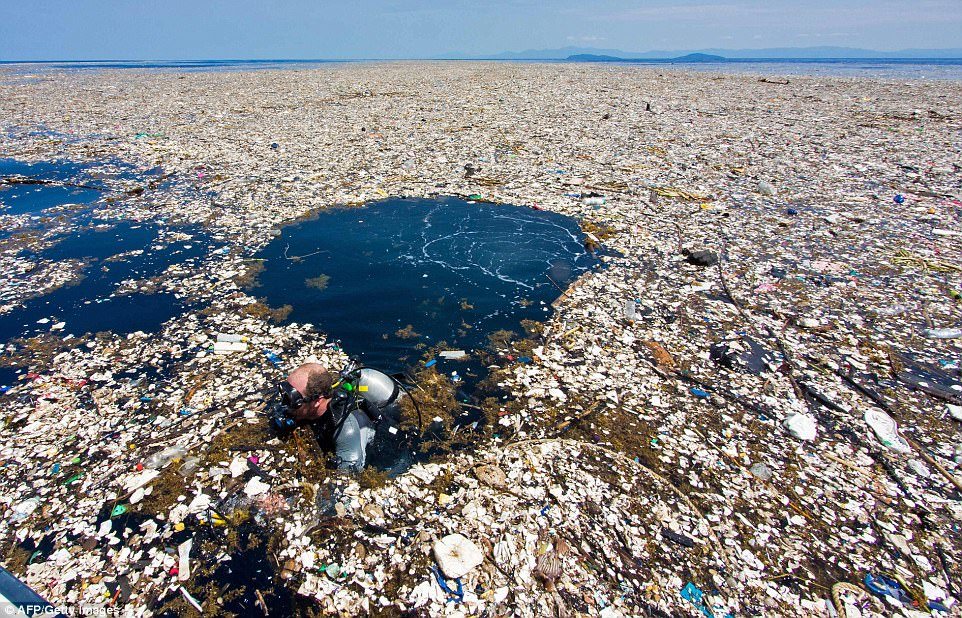Ocean pollution has been a problem for decades and only recently have people put more effort into solving it. In a study done by National Geographic, it was found that “each year, an estimated 18 billion pounds of plastic waste enters the world’s ocean from coastal regions” (“A running list of action on plastic pollution”). This number is incredibly large and impactful. Pollution in the oceans affect marine wildlife and ecosystems which directly impacts humans in various ways that include the economy, seafood industry, and climate. Without solving this issue, the biodiversity found in the oceans can be ultimately destroyed, leading to severe weather amongst other things. Hundreds of companies and people are currently encouraging others to minimize their consumption of single-use plastics and become more educated on how to dispose of their waste properly. There are also several companies working to produce products from upcycled waste found in the oceans. My research question is one that is currently being worked on and although the results are successful, there has not been a huge, noticeable impact on the largest patches of waste that continue to float around the oceans and harm marine life. I believe that this problem has not been fully solved because the islands of waste are not only ridiculously large, but they are far from coastal areas and tend to move around with the currents, making them harder to access.
The largest of the five offshore plastic accumulation zones is The Great Pacific Garbage Patch. According to an organization titled The Ocean Cleanup, the Great Pacific Garbage Patch “covers an estimated surface area of 1.6 million square kilometers, an area twice the size of Texas or three times the size of France” (“What is the Great Pacific Garbage Patch?”). This is the size of only one of the five floating mounds of waste in the oceans. As mentioned previously, the large size makes this pollution incredibly difficult to get rid of. There is actually an organization titled Plastic Bank that employs individuals to collect plastic waste from the ocean that can later be upcycled into new products. I believe that the creation of more companies such as these can help to solve the problem of marine pollution while also solving another unrelated global issue: unemployment. So far during my preliminary research, I have discovered a wide range of companies and the products they are making from upcycled plastic. Products range from graduation gowns, sunglasses, reusable water bottles, running shoes, carpets, soap bottles, and more. Not only are companies using upcycled plastic to create new products but some are even changing their packaging to further minimize plastic use and waste (“The Possibilities are Endless for Reuse of Plastic Ocean Trash”). Other people involved in this issue besides companies such as Unif, Clif Bar, and Norton Point are marine biologists, environmentalists, and environmentally-conscious students like myself. I was unaware of how many companies were already working on this issue but now that I know, I hope that through further research I can discover what has not been done yet and how to change that. I am also hoping to discover a sustainable way to reach the patches of waste and how to transport loads of it with minimal disruptions to marine ecosystems. On top of that, I would love to learn about how I can make lifestyle changes to further help protect marine life.
Preliminary Research Sources
Ocean Cleanup. “The Great Pacific Garbage Patch.” The Ocean Cleanup,
www.theoceancleanup.com/great-pacific-garbage-patch/. Accessed 3 June. 2019.
Howard, Brian Clark. “A Running List of Action on Plastic Pollution.” A Running List of Action
on Plastic Pollution, 11 Jan. 2019,
www.nationalgeographic.com/environment/2018/07/ocean-plastic-pollution-solutions/. Accessed 4 June. 2019.
Greenstein, June. “Upcycled Ocean Plastic.” Upcycled Ocean Plastic, 9 May 2018,
ocean.si.edu/conservation/pollution/upcycled-ocean-plastic. Accessed 4 June. 2019.
US Department of Commerce, and National Oceanic and Atmospheric Administration. “NOAA's
National Ocean Service: Ocean Topics.” Explore, 5 Sept. 2018,
oceanservice.noaa.gov/ocean/.
National Geographic Society. “Great Pacific Garbage Patch.” National Geographic Society, 9
Oct. 2012, www.nationalgeographic.org/encyclopedia/great-pacific-garbage-patch/.
Denchak, Melissa. “Ocean Pollution: The Dirty Facts.” NRDC, 17 Jan. 2019,
www.nrdc.org/stories/ocean-pollution-dirty-facts.

No comments:
Post a Comment